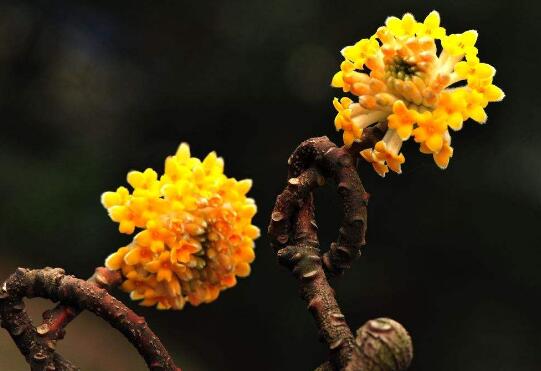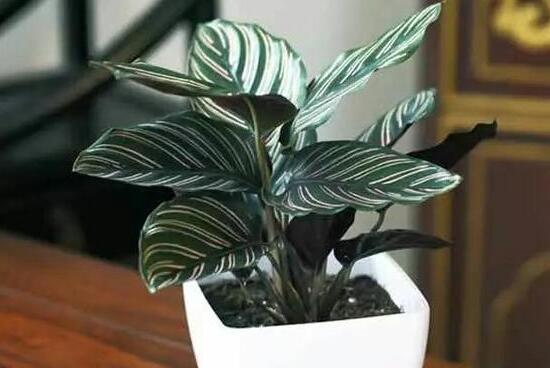How to propagate fragrant flowers, the propagation method of fragrant flowers / mainly by cutting propagation
The fragrant flower is a kind of flower plant of the genus Daphne, which can be seen in many parts of our country. With more and more people raising it, people are more concerned about its reproduction, about how to reproduce. What are the breeding methods of fragrant flowers? Next, the editor will take you to learn about it.
How to propagate fragrant flowers, cuttings / ramets / strips

When it comes to how to reproduce fragrant flowers, in fact, it can be divided into three methods: cutting propagation, split propagation and striping propagation, of which cutting propagation is the main method, and more people use it. Although ramet propagation and striping reproduction are rarely used, as long as they are operated properly, the survival rate is not low. In the following, there are three specific details of reproduction methods, interested friends can understand.
2. Propagation methods of fragrant flowers
No matter what kind of breeding method we carry out, we first need to choose the substrate, which is a step to lay a good foundation and is very important. Generally speaking, it is best to choose loose, fertile and well-drained humus soil as the substrate, which is rich in nutrients and breathable, so that plants can better absorb nutrients.
Cuttage propagation
Cuttage selection: before we carry on the cuttage propagation of fragrant flowers, we must first choose cuttings, the quality of cuttings will directly affect its survival rate, so it is generally best to choose strong and disease-free branches as cuttings, so the survival rate will be very high, if we choose the branches that look very small and delicate, then we can basically declare that cutting failed, and the survival rate will not be very high.
Cutting method: in the propagation method of fragrant flowers, mainly by cutting propagation, we can first use chopsticks to cut a hole in the basin soil, and then insert the cuttings into it for watering. When watering, pay attention to a thorough watering, then 50 days later can root, the next year can be transplanted.
Ramet propagation
The ramet propagation of fragrant flowers can generally be carried out in combination with changing pots. First of all, we should dig up the plants from the potted soil, then remove the old soil, take the sturdy young seedlings, truncate the roots connected to the mother plants, and then plant them in a separate pot. Generally, a complete pot of flowers can grow to 60cm-70cm within a year.
Striping propagation
When we are pressing and propagating the fragrant flowers, we should first select the stout tillering branches, then peel the half-ring of the branches into the soil, reach the depth of the xylem, bury them into the soil, expose the branches slightly, keep them moist, and wait until the next year to cut off the mother branches, and then we can maintain them normally.
How to reproduce fragrant flowers, breeding methods and matters needing attention
The fragrant flower is a kind of potted landscape flower with strong fragrance, which has a beautiful meaning, and its branches are soft and easy to tie a knot, so it is also called a knot tree, and it is precisely because it is easy to tie a knot that it has the moral meaning of a beautiful love knot. Do you know how to reproduce fragrant flowers? Let's take a look at it with the editor of Huayu Network.
Propagation mode of fragrant flower
Fragrant flowers are nicknamed "Huanghua Jiexiang". The posture of the fragrant flowers is elegant, and the soft branches can be knotted, which is very likable. In China, fragrant flowers are also called Chinese love trees. Many people in love believe that if they want to get long-term sweet love and happiness, as long as the eldest brother knot on the branches of the incense tree, the wish can come true. How do fragrant flowers reproduce? There are two ways to reproduce fragrant flowers:
1. Ramet propagation
How do fragrant flowers reproduce? Before sprouting in early spring, take the stout sprouting seedlings, cut off the roots of the fragrant flowers connected to the mother plant, and plant them in the ground to survive. It can grow to 60 to 70 centimeters in a year.
2. Cuttage propagation
The method of how to reproduce fragrant flowers is introduced above. In fact, there are common cuttings. Generally carried out from February to March, select robust branches with a length of 10 cm to 15 cm, cut the lower part into a horseshoe shape with a sharp knife, insert about half of the soil, compacted, watered, shaded and keep the soil moist, and can be rooted in 50 days and can be transplanted the next year.
Culture methods and matters needing attention of fragrant flowers
Soil
How to propagate fragrant flowers it is introduced that fragrant flowers should keep the humidity when cutting, so what are the requirements for the soil? The fleshy root of Jiajie incense is cultivated in sandy loam. it is better to use sandy loam with good drainage and fertile sandy loam regardless of pot planting.
Light
Fragrant flowers like semi-moist sunscreen, planting or placement can be planted or placed on the back against the north wall to the south, to avoid the hot sun in midsummer and the best in winter. Potted plants should be placed in places with better sunshine from autumn to spring, and semi-shaded places in summer, where the leaves are easy to turn yellow and the flowers are less; if the flowers are too overcast, the fragrance of the flowers is light.
Temperature
Fragrant flowers like warm and cold-resistant temperate tree species, like warm climate, but can also withstand freezing within-20 ℃. They can survive the winter outdoors in the south of Beijing, but in the place from-10 ℃ to-20 ℃ in winter, the florescence should be postponed to March to April. If the winter is lower than-20 ℃, it is only suitable to plant in pots and put it on the south windowsill in winter.
Watering
The growing season should be often watered, in order to maintain a slightly moist state, stagnant water is easy to rot roots, too dry easy to fall leaves, will lead to less flowers in the next spring.
Fertilizer application
After flowering, nitrogen fertilizer was applied once to promote the growth of branches and leaves, and compound fertilizer dominated by phosphorus and potassium fertilizer was applied in autumn to promote flower bud differentiation, but no fertilizer was applied in the rest of the time.
Pest control
1. White silk disease is easy to occur due to high temperature and high humidity and poor ventilation.
Prevention and control methods:
① selected healthy and disease-free plants.
② removes diseased or other organic residues, weeds, sclerotia, shade and growth in the soil.
③ should pay attention to drainage and increase the application of organic fertilizer to promote the robust growth of fungi and improve the ability of disease resistance.
Before planting ④, disinfect the soil with 70% pentachloronitrobenzene powder. 10m 24g, loosen the soil after application. After the onset of timely ventilation, with liter of mercury lime water into 1:15, or 50% topazine wettable powder solution, or 1% copper sulfate solution, or verapamil 10 ml / kg to irrigate the root. Other control methods refer to Paeonia lactiflora.
2. Viral leaf shrinkage disease is mainly harmful to leaves.
The disease is easy to occur in rainy and foggy weather. Prevention and control methods: general prevention and control, after the onset of the disease, you can use 50% carbendazim, 50% topiramine wettable powder 800 times solution to spray the plant.
The method of propagation of incense
The growth habit of incense
Jiexiang originated in Henan, Shaanxi and the provinces south of the Yangtze River Basin in China. It likes a warm climate, both sun-resistant and semi-shady, but it is not cold-resistant. Its requirements for soil are loose, fertile and well drained.
The Propagation method of Fructus incense
Before setting incense and sprouting, select a sturdy seedling, truncate its root connected to the mother plant, and plant it in the ground, so that it can grow into a new plant!
Cuttage propagation
Select a healthy and sturdy branch with a length of about 10 to 15 centimeters, cut its lower part into the shape of horseears with a knife, then insert it into about half of the soil, compacted, watered until thoroughly watered, keep the soil moist and shaded, and germinate in about 50 days. it can be transplanted the next year.
Striping propagation
Select the sturdy tillering branches, peel the side pressed into the soil and peel it into a semi-ring, then bury it in the soil, expose the tips of the branches, keep the soil moist, cut off the mother branches in the second year, and cultivate them separately. If the transplant is carried out in winter and spring, it can be transplanted with bare roots. Keep the soil moist during cultivation, which can easily lead to leaf fall if it is dry.
Fertilization management of fruiting incense
The application of nitrogen fertilizer after flowering is beneficial to the growth of branches and leaves, and the application of phosphorus and potassium fertilizer after autumn is beneficial to flower bud differentiation, and the rest of the time can not be fertilized.
The above is the breeding method of incense. I hope flower friends can breed a healthy and beautiful incense according to this article.
- Prev

How to propagate double-line taro and two propagation methods of double-line taro (cutting / ramet)
Double-line taro, a beautiful foliage plant, has broad leaves and rich colors, and the three colors are as good as white, green and red. In life, because the efficacy of double-line taro is powerful, many people keep it, but is a pot too monotonous? It's time to breed a few more pots. How do you reproduce a pair of taro?
- Next

How to propagate lotus bamboo, two propagation methods of lotus bamboo (cutting / sowing)
As a common indoor potted plant, lotus bamboo plays a lot of roles. It can not only be used for viewing, but also beautify the home and purify the air. For such plants, it is good to raise one pot, and more pots are better. If you don't want to waste money, it is necessary to master the breeding method of lotus bamboo. So, how does lotus bamboo reproduce?
Related
- Fuxing push coffee new agricultural production and marketing class: lack of small-scale processing plants
- Jujube rice field leisure farm deep ploughing Yilan for five years to create a space for organic food and play
- Nongyu Farm-A trial of organic papaya for brave women with advanced technology
- Four points for attention in the prevention and control of diseases and insect pests of edible fungi
- How to add nutrient solution to Edible Fungi
- Is there any good way to control edible fungus mites?
- Open Inoculation Technology of Edible Fungi
- Is there any clever way to use fertilizer for edible fungus in winter?
- What agents are used to kill the pathogens of edible fungi in the mushroom shed?
- Rapid drying of Edible Fungi

